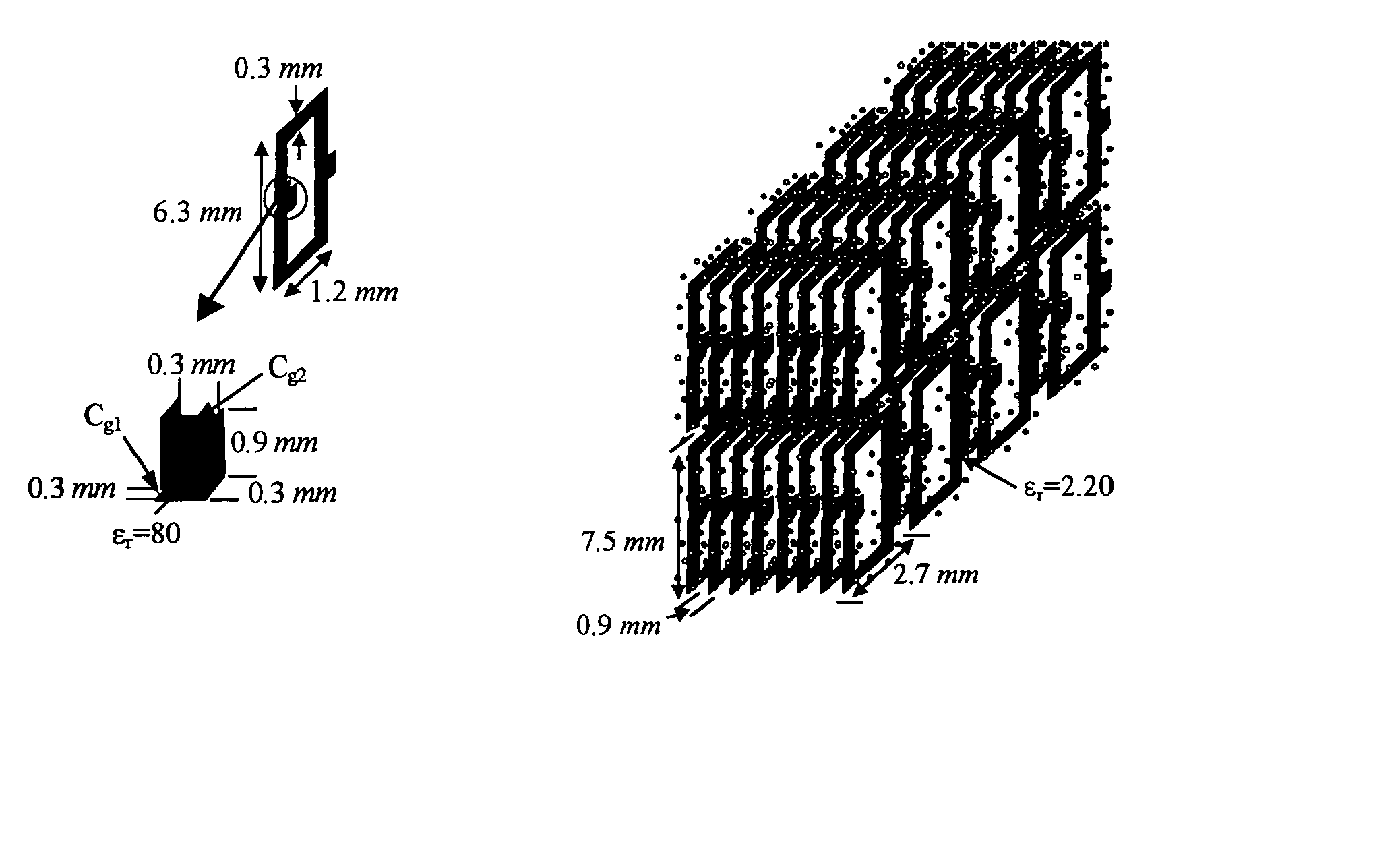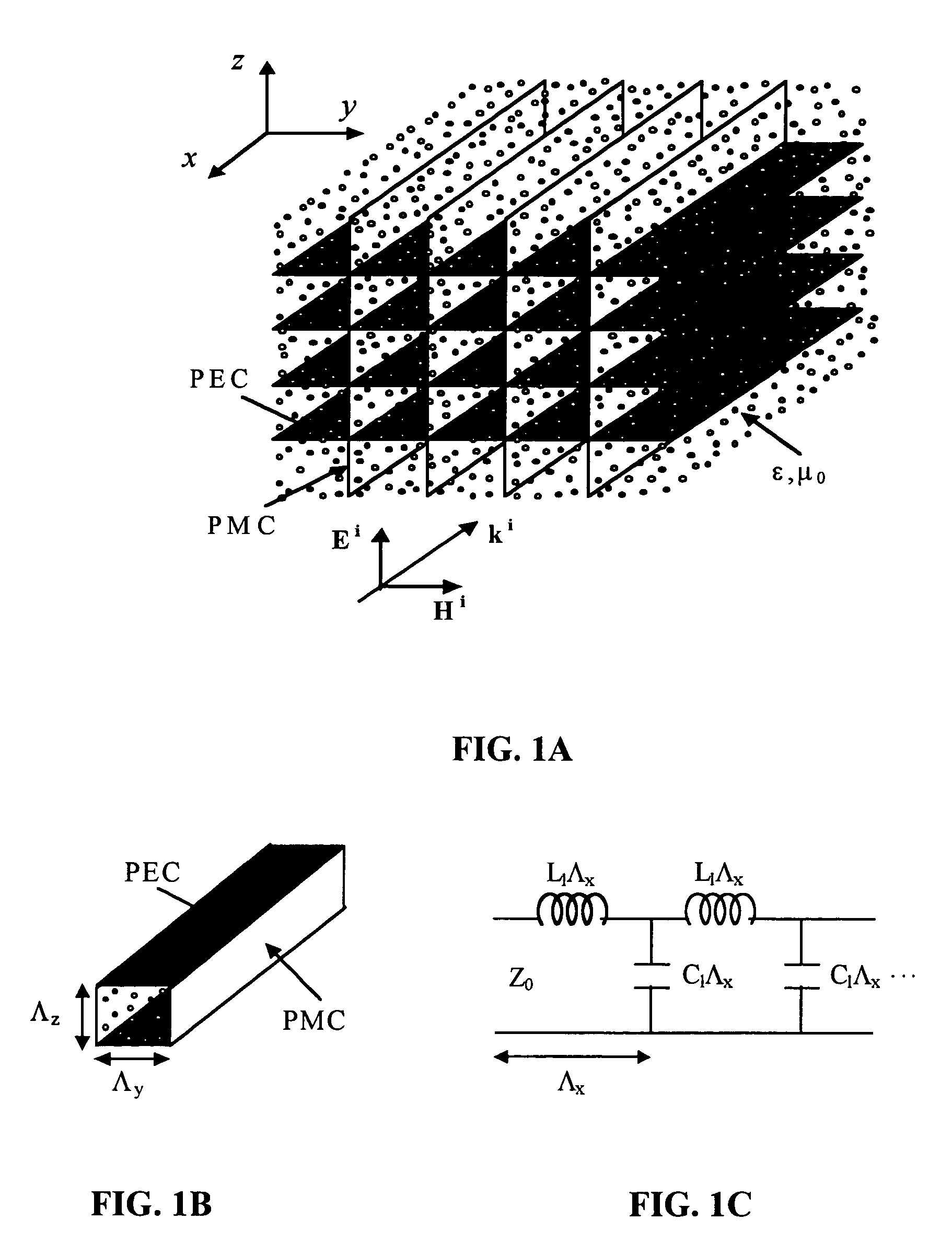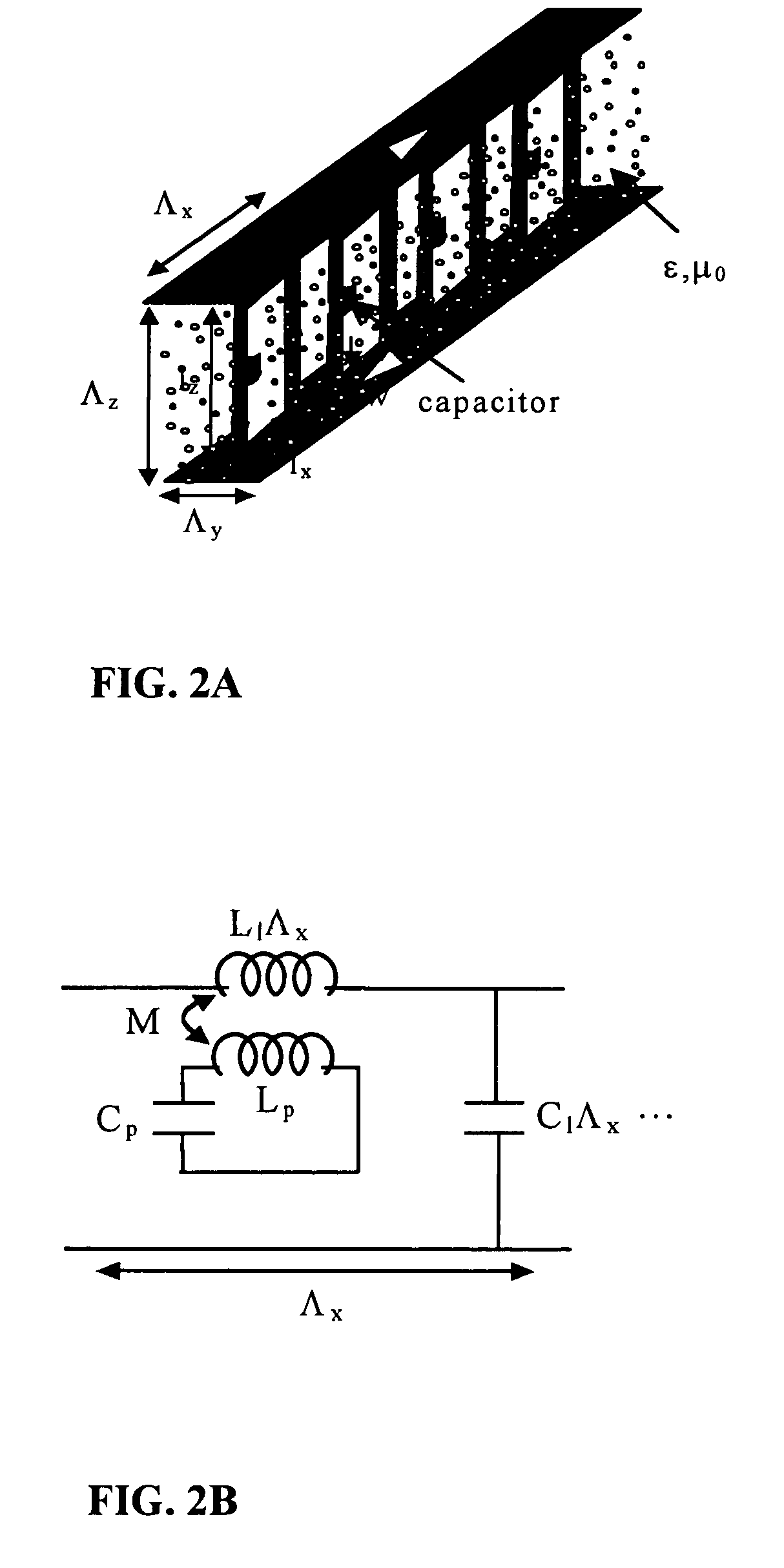Electro-ferromagnetic, tunable electromagnetic band-gap, and bi-anisotropic composite media using wire configurations
a technology of bianisotropic composite media and wire configuration, which is applied in the direction of resonators, waveguides, antennas, etc., can solve the problem that the medium is incapable of supporting propagating waves, and achieve the effect of increasing the bandwidth of the stop band, increasing the effective dielectric of the background material, and reducing the size of the /4 section
- Summary
- Abstract
- Description
- Claims
- Application Information
AI Technical Summary
Benefits of technology
Problems solved by technology
Method used
Image
Examples
Embodiment Construction
Embedded-Circuit Meta-Materials
[0043] In this section the main concept of embedded-circuit meta-materials is introduced and an analytical approach for characterizing their macroscopic material property is presented. The analytical technique is based on a transmission line method that account for mutual interaction of all embedded-circuits. The FDTD numerical technique is also applied to validate the results.
Transmission Line Method
[0044] The simplest form of electromagnetic waves in a homogeneous and source free region is a transverse electromagnetic (TEM) plane wave. Basically a plane wave is an eigenfunction of the wave equation whose corresponding eigenvalue, the propagation constant κ, is a function of the medium constitutive parameters. The interest in studying the behavior of plane waves in a medium stems from the fact that any arbitrary wave function can be expressed in terms of a superposition of these fundamental wave functions. For a simple medium, the permittivity an...
PUM
 Login to View More
Login to View More Abstract
Description
Claims
Application Information
 Login to View More
Login to View More - R&D
- Intellectual Property
- Life Sciences
- Materials
- Tech Scout
- Unparalleled Data Quality
- Higher Quality Content
- 60% Fewer Hallucinations
Browse by: Latest US Patents, China's latest patents, Technical Efficacy Thesaurus, Application Domain, Technology Topic, Popular Technical Reports.
© 2025 PatSnap. All rights reserved.Legal|Privacy policy|Modern Slavery Act Transparency Statement|Sitemap|About US| Contact US: help@patsnap.com



